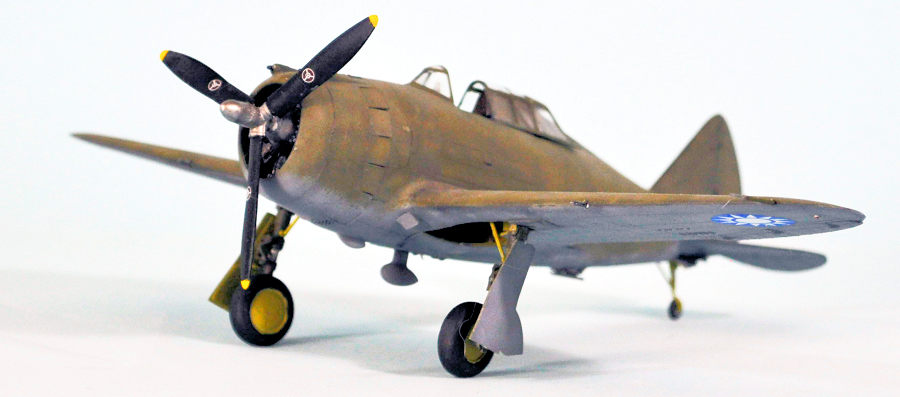
Dora Wings 1/48 P-43A Lancer
| KIT #: | 48029 |
| PRICE: | $ |
| DECALS: | Four options |
| REVIEWER: | Tom Cleaver |
| NOTES: | 2020 tooling |

| HISTORY |
The P-43 Lancer was the final result of the work of one of the most visionary figures in aviation, Alexander P. deSeversky. A pilot in the Imperial Russian Naval Air Service during World War I, Seversky first came to the United States in March 1918, as assistant naval attaché in the Russian Naval Aviation Mission to the United States. As Russia became torn by revolution, he decided to remain in the United States. Aftter offering his services to the War Department, Signal Corps chief General Kenly appointed him a consulting engineer and test pilot assigned to the Buffalo District of aircraft production. Following the Armistice, Seversky joined the staff of air power advocate General Billy Mitchell.
Seversky’s real ability was in technological development. He received the first patent for air-to-air refueling in 1921. He left active service the next year and devoted himself full-time to technical development. By 1928, he had submitted 364 patent applications, including the first gyroscopically stabilized bombsight, which he developed with Sperry Gyroscope Company in 1923. With $50,000 from the sale of his bombsight to the U.S. government, he founded the Seversky Aero Corporation in 1923. By concentrating on producing aircraft parts and instruments, the company survived the stock market crash of 1929. On February 16, 1931, backed by Wall Street millionaire Edward Moore and other investors, the company became the new Seversky Aircraft Corporation in Long Island, New York. Seversky's patents were the primary assets of the new company, and he resolved to invest in research and design. As a Russien emigre, many of Seversky's designers were Russian and Georgian engineers, including Chief Engineer Michael Gregor and Alexander Kartveli.
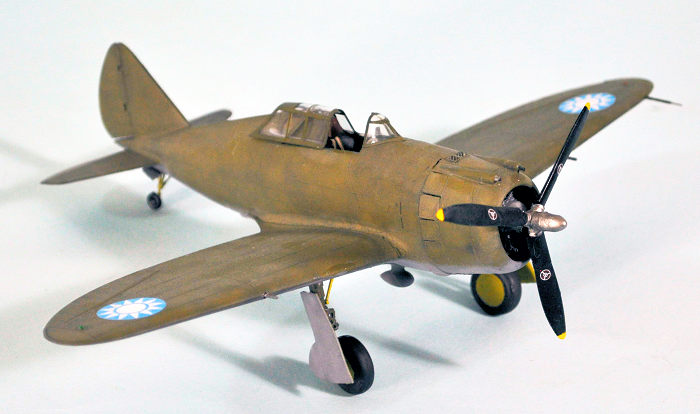 The aviation world first took serious notice of Seversky and his
company with the appearance in 1933 of an advanced all-metal,
multi-place monoplane amphibian, the SEV-3, one of the most advanced
designs in existence at the time. Often piloted by Seversky himself, the
SEV-3 set a speed record for amphibious aircraft of 230 mph on September
15, 1935. With the “wet wing” providing the greatest range of any
contemporary, Seversky also set a transcontinental speed record in 1938.
The aviation world first took serious notice of Seversky and his
company with the appearance in 1933 of an advanced all-metal,
multi-place monoplane amphibian, the SEV-3, one of the most advanced
designs in existence at the time. Often piloted by Seversky himself, the
SEV-3 set a speed record for amphibious aircraft of 230 mph on September
15, 1935. With the “wet wing” providing the greatest range of any
contemporary, Seversky also set a transcontinental speed record in 1938.
The most important development of the design was the SEV-1P single-seat fighter. Originally fitted with a fixed spatted undercarriage, it was later fitted with a rearward-retracting landing gear and became the prototype of the P-35A, the Air Corps’ first fighter to combing all-metal construction with a retractable landing gear and enclosed cockpit. The SEV-S2, which was virtually identical to the P-35, dominated the last three Bendix Trophy air races, beginning in 1937 when Frank Fuller won at an average speed of 258 mph.
As with many visionaries, Seversky was not a successful operations manager. The company expanded in 1936, purchasing three factories, an airfield and hangar along with a seaplane assembly base at Famingdale and Amityville, Long Island. Despite landing several government contracts, including the P-35, the company never turned a profit under Seversky's leadership. In 1938, bankruptcy was avoided when Paul Moore, brother and heir of Edward, refinanced the company with proviso that Seversky, as President, would have his budget cut, while managine director Wallace Kellett assumed day-to-day control. When Seversky negotiated a secret contract with the Japanese for 20 SEV-2PA-B3, the resulting antagonism with the War Department led to the Air Corps limiting the P-35 order to the initial 76 aircraft, opening the door for Curtiss to take up the space with their P-36 Hawk that had initially lost the competition with the P-35. While Seversky made a European sales tour in 1939, the board of directors reorganized the company on October 13, 1939 as Republic Aviation Corporation with Kellett the new president.
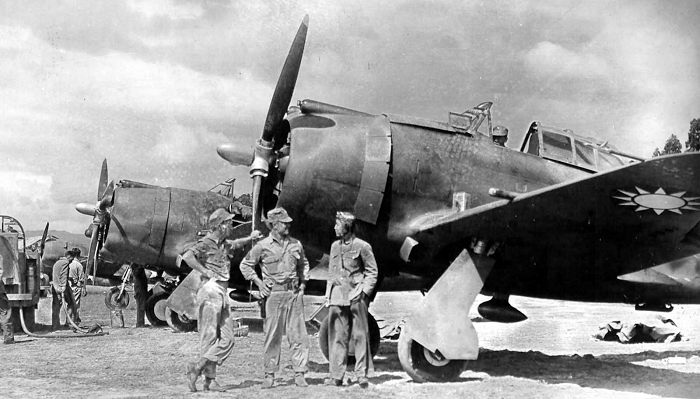 Seversky’s most important decision as leader of the company was
to hire Alexander Kartveli as a designer. Born Alexander Kartvelishvili
in Tblisi, Georgia, on September 9, 1896, he moved to Paris shortly
before the outbreak of war to study aeronautical engineering and
raduated in 1922 from the Highest School of Aviation in Paris. A
short-loved career as a test pilot ended when he was seriously injured
during a test flight. Between 1922–1927, he worked at the Louis Blériot
company and designed the Bernard and Ferbois aircraft. In 1924, one of
his aircraft established a world speed record, demonstrating his gifts
as a designer. Following this success, American millionaire Charles
Levine invited him to come to New York, and join the Atlantic Aircraft
Corporation in 1928. In 1931, Kartvelishvili met Alexander deSeversky
and went to work for his fellow Georgian, “Americanizing” his name to
Kartveli. He was the primary designer of the SEV-3 and its later
developments.
Seversky’s most important decision as leader of the company was
to hire Alexander Kartveli as a designer. Born Alexander Kartvelishvili
in Tblisi, Georgia, on September 9, 1896, he moved to Paris shortly
before the outbreak of war to study aeronautical engineering and
raduated in 1922 from the Highest School of Aviation in Paris. A
short-loved career as a test pilot ended when he was seriously injured
during a test flight. Between 1922–1927, he worked at the Louis Blériot
company and designed the Bernard and Ferbois aircraft. In 1924, one of
his aircraft established a world speed record, demonstrating his gifts
as a designer. Following this success, American millionaire Charles
Levine invited him to come to New York, and join the Atlantic Aircraft
Corporation in 1928. In 1931, Kartvelishvili met Alexander deSeversky
and went to work for his fellow Georgian, “Americanizing” his name to
Kartveli. He was the primary designer of the SEV-3 and its later
developments.
Kartveli became interested in increasing the altitude capability of the P-35, which resulted in the last P-35 being turned into the XP-41, with a Pratt & Whitney R-1830-19 engine equipped with a two-speed supercharger and revised, inward-retracting landing gear. At the same time, Kartveli developed the AP-4 demonstrator that appeared in 1939 shortly after the company’s reorganization and name change to Republic. Powered by a by a Pratt & Whitney R-1830 radial engine with a belly-mounted Boeing-developed turbocharger, the Air Corps ordered 272 as the P-43, giving it the name “Lancer.” The fighter had a very good high-altitude performance coupled with an effective oxygen system. The USAAF, however, labeled it a “failure,” and after serving with several soon-to-be P-38 groups on the West Coast in the spring of 1942, it became a trainer.
As with airplanes like the P-36, the Brewster Buffalo, and the P-40, it turns out that “official history” and reality are two very different topics. Here’s the real story:
Fast, with excellent long-range capabilities, the P-43 would see service in the Pacific War with both the USAAF in China and the RAAF for long-range, high-altitude photo recon missions until replaced by F-4/F-5 Lightnings.
 The major combat service of the P-43 was with the Republic of
China Air Force, which is little-known. The Chinese liked the airplane
from the first time their purchasing commission saw it, where the USAAF
didn’t, and got the US to provide 100 to them through Lend-Lease in late
1941/early 1942. The airplanes arrived in India in March/April 1942,
where they were assembled and delivered on to China flying over the
Hump. Some 20 didn’t make it, another 20 or so didn’t survive their
Chinese pilots learning to fly them, but the 60-some left gave good
service until the fall of 1943.
The major combat service of the P-43 was with the Republic of
China Air Force, which is little-known. The Chinese liked the airplane
from the first time their purchasing commission saw it, where the USAAF
didn’t, and got the US to provide 100 to them through Lend-Lease in late
1941/early 1942. The airplanes arrived in India in March/April 1942,
where they were assembled and delivered on to China flying over the
Hump. Some 20 didn’t make it, another 20 or so didn’t survive their
Chinese pilots learning to fly them, but the 60-some left gave good
service until the fall of 1943.
Prior to the arrival of the P-38 in China, the P-43 was the only airplane that could get up to the operating altitude of the JAAF’s new recon aircraft, the Ki-46 “Dinah,” and catch it. They were also used by both the ROCAF and the USAAF 23rd Fighter Group for reconnaissance, since they had the Seversky “wet wing” and good range. The 23rd Fighter Group regularly flew them from Kunming down over northern Indochina as far as Hanoi and Haiphong, as well as out to the coast as far as Hong Kong and Shanghai, and the Japanese didn’t have a fighter in China that could get to the altitude they were flying at (35,000 feet plus).
In air combat, the P-43 did well against the Ki-27 Nate and Ki-43 Oscar so long as it fought in the vertical plane and used the dive-and-zoom tactic on the JAAF fighters from an altitude advantage. At least one ROCAF pilot was credited as an ace flying the P-43.
The ROCAF only stopped using the P-43 when they ran out of spares and the USAAF took the R-1830 engines for C-47s. Robert L. Scott Jr. liked the airplane and flew one up to Mt Everest in July 1942, where he took the first photos looking down on the mountain.
The P-43 is very reminiscent of the Reggiane series of fighters, which isn’t so surprising when one considers that Kartveli’s chief assistant was Roberto Longhi, who became Reggiane’s chief designer after he left Seversky and returned to his native Italy when the founder was deposed. As a friend said, “paint blotches on it and it’s a Re-2003.”
| THE KIT |
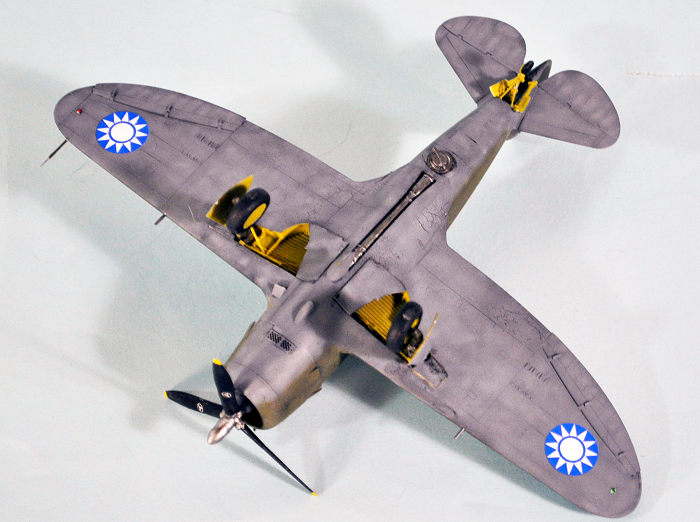 I was interested when Dora Wings announced this, having tried to do
the Classic Airframes kit, which really deserves every bad word ever said
about it, being one of the “lesser products” of that company. I was planning
on ordering one when I get my payment for submitting the current manuscript,
so I was surprised when my friend Eugen, who works at Dora Wings, sent me
one for review. I got the manuscript sent off, decided to take some time to
just do a model, and decided this would be the one.
I was interested when Dora Wings announced this, having tried to do
the Classic Airframes kit, which really deserves every bad word ever said
about it, being one of the “lesser products” of that company. I was planning
on ordering one when I get my payment for submitting the current manuscript,
so I was surprised when my friend Eugen, who works at Dora Wings, sent me
one for review. I got the manuscript sent off, decided to take some time to
just do a model, and decided this would be the one.
So, like all other Dora Wings kits, it is a “high end” limited run kit but the operative terms are still “limited run.” The nice thing is, with “some modeling skills” applied, it goes together very well for a limited run kit, with only a bit of filler needed, and the result looks very good. So before I proceed further, if you’ve been thinking about getting this, go ahead and do it. If you have experience with limited run kits, you’ll get a great result. Be sure to test fit three times before gluing once, and yes, you will have to modify little things here and there to get good fit. Nothing an experienced limited run kit builder doesn’t know how to do.
The decals in the kit include a YP-43A that served in the 1st Pursuit Group in early 1942, A P-43 that was used by the 55th Pursuit Group for defense on the West Coast in late 1942/early 1942, and two anonymous P-43s probably used as trainers. For those who are interested, there are photos of P-43s on the internet showing them in camouflage with the 1st Pursuit Group, and also with red crosses over their insignia for participation in the 1941 War Games.
The end result of the research I did was I decided to do a well-used ROCAF airplane. From photos I found, I would only need Chinese insignia from one of my AVG decal sheets.
| CONSTRUCTION |
One thing: there are a *lot* of sprue attachments, but fortunately they are done so they won’t harm the outer surface if you are careful in cutting the part off the sprue. Be very certain to get all the sprue nubs sanded off the parts, because even if this is a limited run kit, it was designed with pretty precise parts fit and you want the mating surfaces nice and smooth.
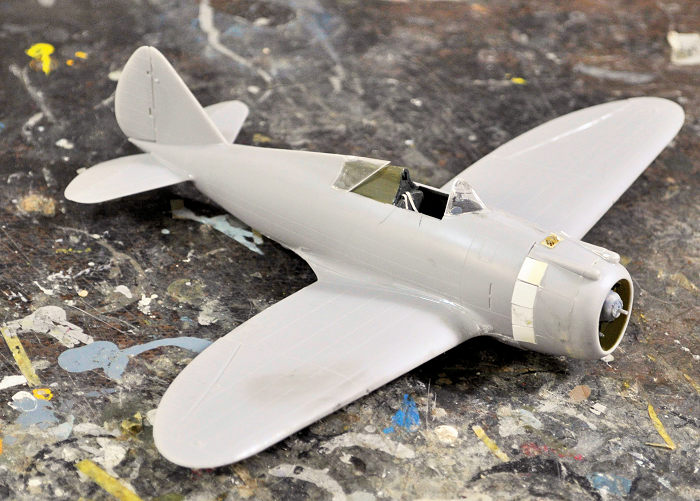 I started with the wing. The upper wing has the full trailing edge
with it, which insures a knife blade trailing edge, but you need to sand
down the area of the flaps inside the lower wing part to thin it down to get
as close a fit as possible. This is the only place you’ll use any filler, if
you take care on the rest of the assembly, You can see the area where I
applied Mr. Surfacer to the lower wing in the upside-down shot below.
I started with the wing. The upper wing has the full trailing edge
with it, which insures a knife blade trailing edge, but you need to sand
down the area of the flaps inside the lower wing part to thin it down to get
as close a fit as possible. This is the only place you’ll use any filler, if
you take care on the rest of the assembly, You can see the area where I
applied Mr. Surfacer to the lower wing in the upside-down shot below.
The cockpit is nicely detailed. The callout is for Interior Green, but I suspect (but cannot be absolutely certain) that the painting of the early P-47B was likely a holdover from the P-43, and I know those cockpits and all other P-47 cockpits are dull dark green, so that is what I went with here. The kit-supplied photo-etch is nearly useless, so I used Eduard seat belts. Once assembled and inside the fuselage half, the fuselage came together nicely, and by being careful (since there are no locating pins) I got it together such that I only needed a light scrape-down of the fuselage centerline seam.
You do not need to assemble that ferschlugginah engine mount, since you don’t need to use it and you won’t see it in the end. As to the engine, this is probably the nicest R-1830 engine model I’ve ever seen. Very delicate parts, and you are guaranteed to break some of the pushrods cutting those off. So I concentrated on getting one set, and then only detailed the front face, since once again, you won’t see the back. The cowling was fiddly to assemble, but again take your time, be certain the sprue nubs are cleaned off completely, and it fits. You can glue the engine inside to the cowling, so you really don’t need that engine mount. The p-e cowl flaps were useless, so I replaced them with .010 Evergreen sheet, opening them a slight bit as it appears they always sat that way on the ground in China.
The wing to fuselage join was easy. I got it in position, then glued
the areas of the lower wing that attach to the fuselage fore and aft of the
wing and wrapped those with rubber bands after being sure they were
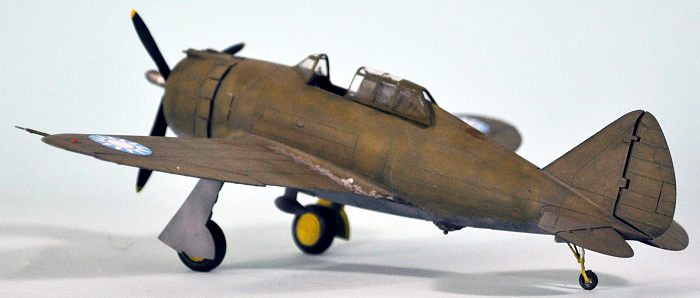 positioned right. Then I wrapped a rubber band around the wing, wingtip to
wingtip, to increase the dihedral and get a nice tight fit of the upper wing
to fuselage. Do this right and no putty is needed anywhere. Let the model
set up overnight and when you remove the rubber bands, the wing will take
correct dihedral with everything nice and tight and no gaps anywhere.
positioned right. Then I wrapped a rubber band around the wing, wingtip to
wingtip, to increase the dihedral and get a nice tight fit of the upper wing
to fuselage. Do this right and no putty is needed anywhere. Let the model
set up overnight and when you remove the rubber bands, the wing will take
correct dihedral with everything nice and tight and no gaps anywhere.
You need to widen the slots for the horizontal stabilizers to attach to the fuselage, but if you do that right and test-fit, you won’t need any putty there either. The rudder is a bit of a pain because it has that business of one side has the trailing edge and the other doesn’t. Again, sand the “inner” part till it fits perfectly to the other side, then run glue around the inside of the larger half, and attach them, squeezing them together to get a nice tight fit at that trailing edge. Then “paint” that joint with liquid cement and you can get things smooth enough you don’t have to sand down and lose the rib detail. I rounded the leading edges of the elevators, so they could be posed drooped.
| COLORS & MARKINGS |
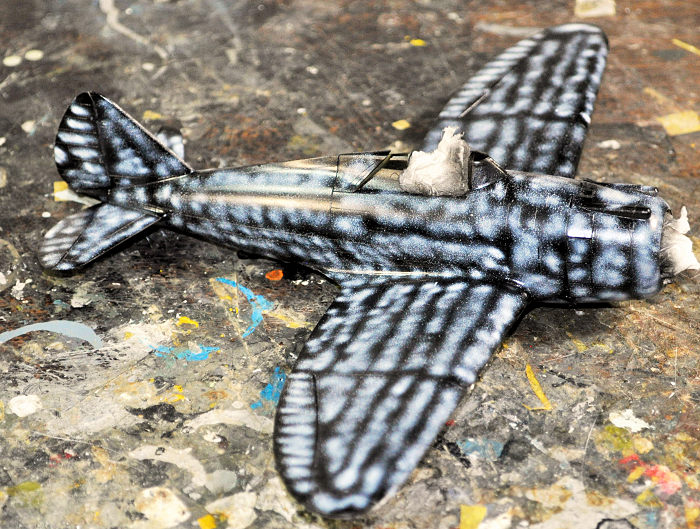 I decided to try the “marbling” technique for this, since I wanted
to do a very faded paint job, like an airplane that had gone through two
south China summers. I gave the model an overall coat of Tamiya semi-gloss
black, then “marbled” that with thinned Tamiya X-2 gloss white.
I decided to try the “marbling” technique for this, since I wanted
to do a very faded paint job, like an airplane that had gone through two
south China summers. I gave the model an overall coat of Tamiya semi-gloss
black, then “marbled” that with thinned Tamiya X-2 gloss white.
I painted the model with Tamiya XF-53 “Neutral Grey” and my mixture for “OD-41 (Green base)” thinned in both cases to 50-50 and built up over the marbling to get a worn, uneven look to the finish, with the upper surface gone over with my mixture of “faded OD-41.” Suffice to say I am now a real fan of this technique; it’s the perfect way to pre-shade without ending up with that cartoonish “Spanish School” look.
Discovering that many of the ROCAF P-43s didn’t carry much in the way of markings, I only used ROCAF national insignia, faded on the upper wing and unfaded on the lower wing, from an AVG sheet.
| FINAL CONSTRUCTION |
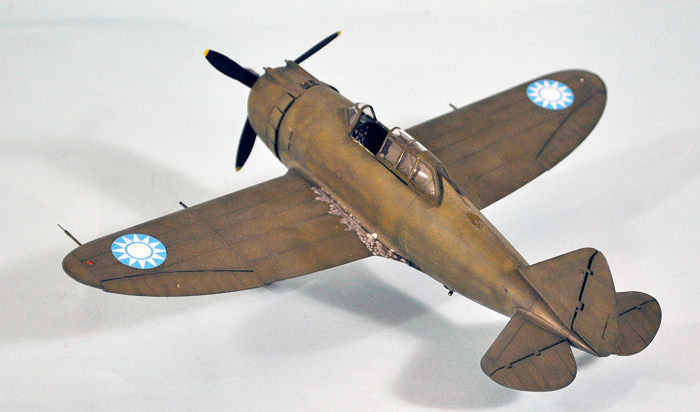 I discovered that the inner and outer mainwheel doors are closed
when the airplane is on the ground. Had I realized that to begin with, I
would have glued them in position before further assembly of the wing, to
get a really nice flush position by working from inside and out and trimming
the door parts as necessary. I suggest you do that with yours.
I discovered that the inner and outer mainwheel doors are closed
when the airplane is on the ground. Had I realized that to begin with, I
would have glued them in position before further assembly of the wing, to
get a really nice flush position by working from inside and out and trimming
the door parts as necessary. I suggest you do that with yours.
I attached the landing gear, and found that the tailwheel, which is done “in scale” regarding size and thickness, is weak enough to that merely the light weight of the model will deform it. I bent it back into the proper position, then ran CA glue over the gear leg to stiffen it, and ran CA glue into the attachment area of the wheel to the gear leg. In both cases, you don’t notice this, and the tailwheel now has enough strength. I suggest you do that with yours.
The canopy fits in position to be open, so I did that. I fitted the prop and called it finished.
| CONCLUSIONS |
Well, if nothing else, this kit is further proof that a lot of aviation “history” is pretty hysterical. If you commit to taking your time and cleaning up parts thoroughly, then fitting carefully, you will have an excellent model. Remember that it’s “limited run” and you’ll get a result that looks like anything but.
Recommended for those with experience doing limited run kits.
3 September 2020
Copyright ModelingMadness.com
Review kit courtesy of Dora Wings.
If you would like your product reviewed fairly and fairly quickly, please contact the editor or see other details in the Note to Contributors.
Back to the Main Page Back to the Review Index Page Back to the Previews Index Page